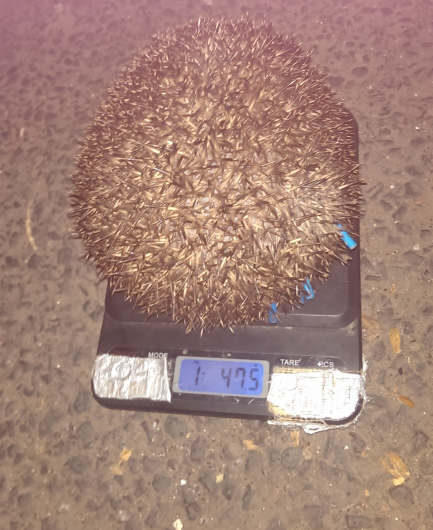News
Mrs Tiggywinkle may be endearing and popular, but she and her ilk are in trouble. David Macdonald reports how WildCRU researchers, together with colleagues from Aberdeen, have explored the cost of living for a modern farmland hedgehog
Our team, led by Dr Carly Pettett, sought to understand the decline in hedgehog numbers, and why it has seemingly been most severe in rural areas. Previously, and working on a grant from the Peoples’ Trust for Endangered Species and the British Hedgehog Preservation Society,, Carly had demonstrated that arable land is typically under-selected by hedgehogs, which are attracted to urban habitats such as rural villages. The team used doubly labelled water (our colleagues in Aberdeen are international leaders in this technique), an approach which had never been used before on hedgehogs, to measure daily energy expenditure (DEE) in wild hedgehogs. Our aim was to reveal the cost of living for hedgehogs, and for a wild animal the best currency in which to measure that cost is energy. Was it expensive, for example, or economical, for hedgehogs to spend time in the villages that they seem to favour over arable farmland?
Our findings have just been published in http://jeb.biologists.org/content/220/3/460. We found that DEE increased the further a hedgehog was from buildings. Why is arable land an expensive place to live? On possibility is that prey are sparse and widely dispersed there, and hence that the hogs were compelled to range over larger distances to find sufficient prey on arable land. Next, Carly spotted that the hedgehogs had an approximately 30% lower DEE on sites where their main predator, the badger was present. Living alongside a dangerous predator is a risky business so at first we were surprised that it seemed energetically cheap to do so. Then it occurred to us that on badger-occupied sites hedgehogs may strive to lie low – dealing with the essentials of foraging but otherwise wandering around as little as possible to avoid bumping into badgers. So, the bottom line on this cost of living analysis for hedgehogs is that they face lower energetic costs in villages than on the surrounding arable land, and this, combined with the risk of predation on arable land, are important parts of the answer to why hedgehogs prefer rural villages in arable areas.
We think this is an important insight for hedgehog conservation, and happily the Journal of Experimental Biology has picked up the story and made it a feature, which you can read at: of http://jeb.biologists.org/content/220/3/22
Here you can read a PTES summary of the research by Dr Carly Pettett.







